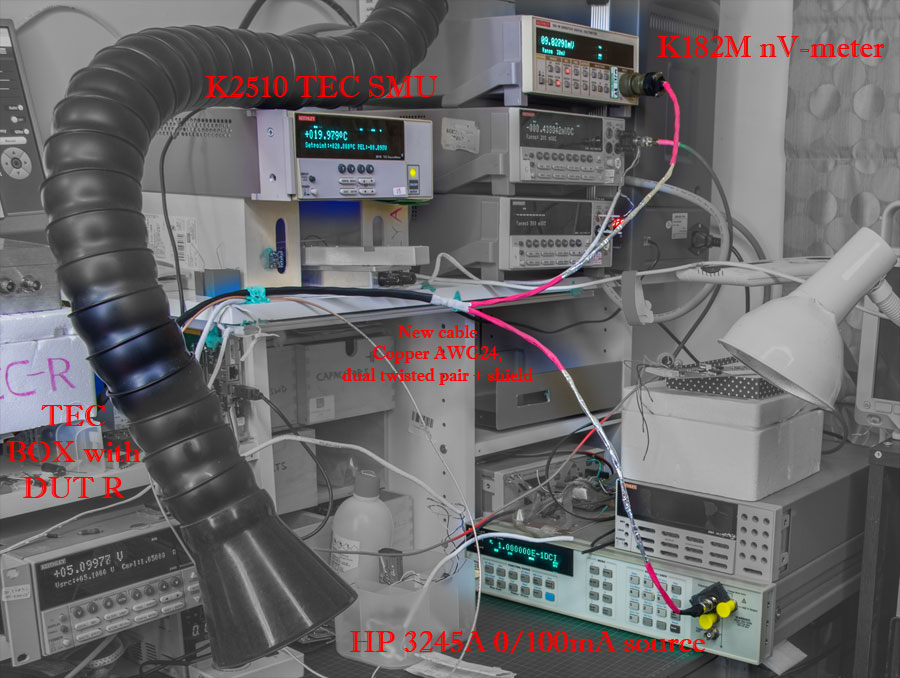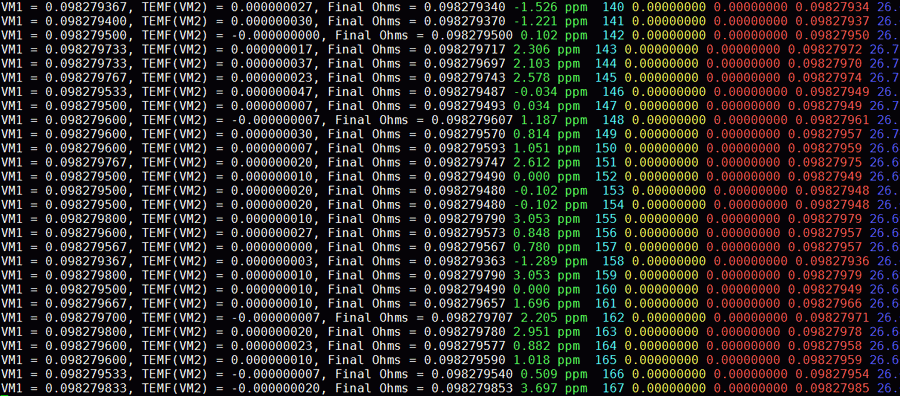Made a new cable to test both ideas if we see improvement:
1. Used 1m long 4-conductor cable AWG24-ish with twisted pairs, single strand copper wires. All four wires freshly cut and soldered to shunt (this time HP 3458A 0.1 ohm 4W). Then cable with intact jacket exits TEC box, going about 30cm out and branches to two heads. One twisted pair (still with foil shield) goes to BNC on current source. Second twisted pairs soldered to "Cannon"-type connector, going to Keithley 182-M.

2. Python code was modified to perform "OCOMP" 2-point measurement on each point, such as:
Initial setup, current source (LTZ-powered HP 3245A, able to source 100mA) and K182 controlled by GPIB Pi.
Current source set to 0 mA, Soaking 15 seconds. K182 is nulled, 30mV range used.
Current source set to 100mA, data collection started.
Each sample : Current source set to 100mA, delay 1 second. Three samples taken and averaged to VM1 value. Then Current source set to 0 mA (range unchanged), delay 1 second. Three samples taken and averaged to VM2 value. VM2 subtracted from VM1 and resistance value calculated, assuming current is stable (source confirmed to be stable within 2ppm over 24h).
Each calculation logged for overview:

Tomorrow after some 20+ hours I'll have full ramp data to study
